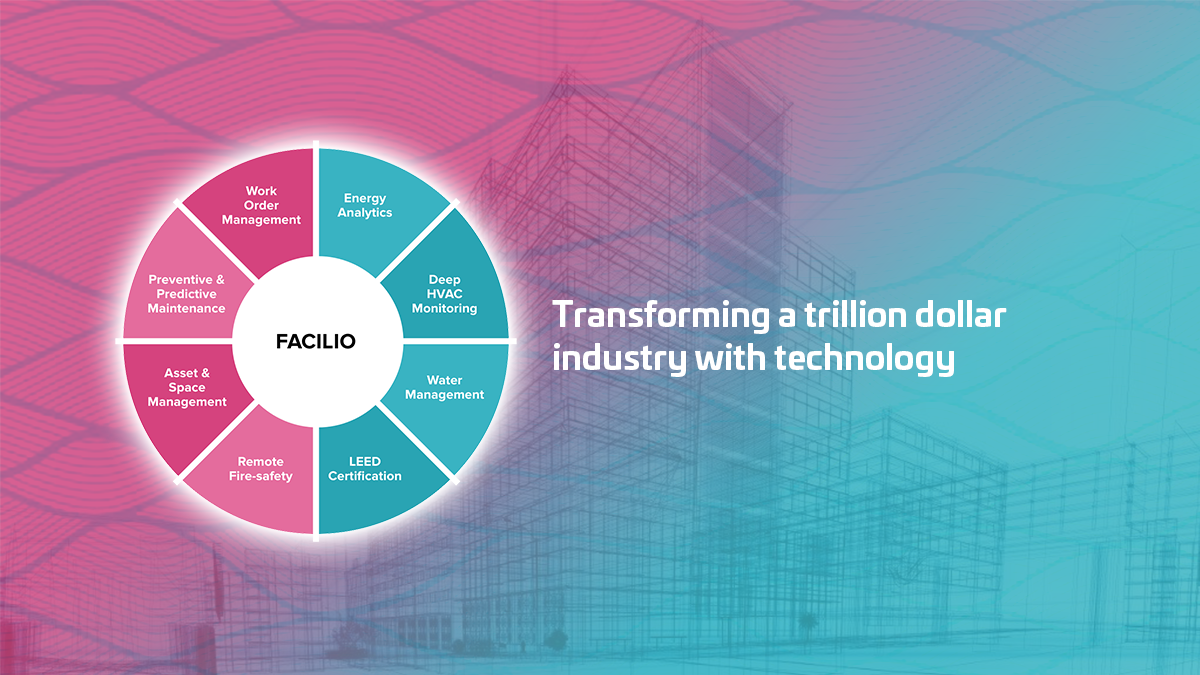An incredible amount of work goes into designing, installing, and maintaining the space that makes your business run smoothly every day. Buildings, more than anything, are really complex machines. The reality is, however, that most of our buildings — even the fanciest, largest facilities — have operated with minimal technology for years. Most buildings remain inefficient, energy-negative, and uncomfortable for occupants.
For a trillion dollar industry, innovation in buildings has moved particularly slowly. Facilities and their subsets are regarded as an afterthought, not a focal point of business decisions. Over the last 30 years, the application revolution has improved business efficiency, allowing teams to collaborate and stay in control of their work. (Slack, Skype, Salesforce, and so on.)
Buildings, on the other hand, have enjoyed few advancements that create visibility of real-time performance or accountability for energy spend. Most buildings don’t even have easily accessible central controls of operations.
Valueless data swamps creating poor visibility of building economics
The annual operating cost of real estate is approximately 25 percent of the construction cost. Of that cost, about 41 percent is spent on facility operations and 52 percent on energy and asset maintenance. Energy efficiency, asset health, and occupant experience are all major revenue drivers, and they all manifest in those operating costs.

Most operators and facilities management companies are bogged down in an endless cycle of chasing down maintenance, asset, and energy data. They chase that data through checklists, spreadsheets, and other makeshift solutions, all spread across chronology and geography.
This is primarily because buildings have multiple automation systems and microcomputer-like control devices that generate enormous amounts of data every day: fire-safety, HVAC, elevators, and so on. Typically, these vast data swamps were either originally designed to operate independently or siloed by automation vendor lock-in.
Shifting towards contextual, data-driven facilities
Buildings generating lots of data sit unused, burying actionable insights, thus creating a blindfold over organizational decisions. Facility managers have always found it difficult moving building data from the basement to the boardroom. They’ve had to stretch too thin to centrally operate building maintenance and energy efficiency in real-time.
Today, commercial real estate (CRE) owners find it hard to answer questions like, do I know which of my buildings have better, more productive facility teams? Why did my site consume more energy than the previous month? Do I have to replace my HVAC vendor because most of their equipment fail fast?
The necessity to answer such questions has created the blueprint for building ecosystems to be successful in the age of the Internet of Things. With the smart building wave, the industry is breaking away from the trademark legacy approach, elevating facilities to create new values centered around data, context, and efficiency.
Combining maintenance and sustainability for continuous efficiency
Challenges that rank high on the agenda of property managers include reducing operating costs and meeting compliance. It is there where the value of IoT in building will be seen, not by the addition of new, connected sensors that only add complexity to the already siloed environment.

Tech-driven applications that comb through the existing pool of data will exemplify the best of how IoT can change the way buildings are operated. Facility stakeholders can then predictively improve efficiency of maintenance and sustainability across their portfolios.
Advanced technologies are now here to bring continuous efficiency in buildings that hasn’t previously been possible. Now, for the first time ever, there are opportunities to solve the most vexing problems of the industry. Using IoT and powerful machine learning models, facility stakeholders can now be empowered with contextual data and central control to improve building performance and sustainability.
BuiltWorlds partnered with Facilio to bring you this article. Facilio is a unified suite of facilities and sustainability management software that harnesses IoT and Machine Learning to help buildings, manage operations, maintenance, and sustainability performance across portfolio.



Discussion
Be the first to leave a comment.
You must be a member of the BuiltWorlds community to join the discussion.